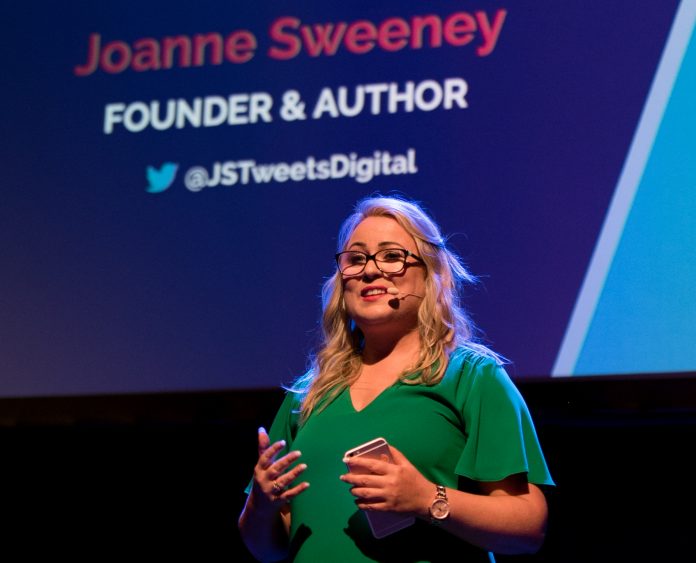Barack Obama’s vision for transparent government communications rings true in a post-COVID-19 world. Here, we find out how the government and public sector can win at social media for the public good
Let me start by bringing you inside the White House. It’s January 2011, and Barack Obama begins his very first day as the 44th president of the United States of America. Barack Obama issued a call to action by signing the Open Government Directive. It was the formal acknowledgement that the three principles of transparency, participation and collaboration, form the cornerstone of an open government.
“It is now the duty and obligation of the public sector to reinvent the government experience, by applying digital technologies and strategies.”
This quote comes from Tom Cochran, who brings us behind the scenes of that historic moment in the White House in the foreword of my book, Public Sector Marketing Pro. He was the President’s Chief Digital Officer at the time, and also worked then subsequently at the U.S. State Department.
President Obama’s vision for, and commitment to delivering a more transparent and collaborative government is not lost on us today, and it’s certainly not lost on you. Today, more than ever, we need government and public sector professionals to be skilled in critical thinking, strategy and the practical skills of social media.
Senior leadership need to drive transformation
100 public sector pros studying at the Public Sector Marketing Institute were asked to share the top three barriers to effective social media delivery in their organisation. The results were clear.
- Management buy-in (in-source social media and upskill staff).
- Not having a social media strategy.
- Understanding how to evaluate social media success.
Trust and transparency is the number one currency in the Digital Age.
Without a medical intervention for COVID-19, governments and public health agencies are reliant on the commitment, goodwill and staying power of the public to adhere to public health advice.
That advice has almost exclusively been shared online as well as through partnerships with national media outlets to livestream regular press briefings.
In a recent interview with Alexandra Kumanovic, Social Media Manager at the World Health Organization, it became clear that the power of social media is aiding in an effort to slow the spread of the coronavirus.
“We know that social media and digital communication never sleeps. We bring a passion and adrenaline to the job so that we can follow information constantly, to respond to information constantly, to be there out there for people, especially as we are in a war with misinformation. Some of the lessons I would say is that we need to ensure that we are doing the right thing and that we are communicating in a right way.”
That’s why the work and commitment to digital communications transformation are so important to senior leaders. To quote another WHO senior executive. Dr Mike Ryan, Head of the Emergencies Programme says that the work of social media staff is as important as frontline workers to halt the spread of the virus.
The experience of COVID-19 has not only rattled our world, our governments, our public health services and public sector agencies and frontline staff, but it’s also rattled how we think and what we believe is important in life.
This would be a good point to watch this video: Digital Communications Lessons from COVID-19.
How to master social media in government & public sector
Don’t fear social media, embrace it with confidence and competency. Your staff have 90% of the public sector and policy intuitiveness to do the job, let me provide the extra 10%.
I’m sharing my top 10 tactics on how to master social media for the public good.
- A strategy: Successful social media requires a roadmap with defined goals and key performance indicators.
- Audience segmentation: Understanding who your citizens are, what they care about, where they are online and how you will engage with them is crucial.
- Channel strategy: While all of the social networks have similar features, they require a unique approach to build awareness, engagement and conversation with your citizens.
- Community management: Social media is a two-way street. If you are not willing to engage with citizens, you are merely broadcasting. A community management plan will set out the framework of meaningful conversations.
- Hashtags: Born on Twitter, hashtags are one of the most powerful ways to take your social media efforts to the next level.
- Social and live video: Going front of screen improves trust and transparency as well as helping to amplify subject matter expertise within your organisation.
- Work practices: Changing how you approach communications is vital if you are to succeed online. Being agile, creative and innovative are key to mastering social media.
- In-source and upskill: Social media is a fundamental way in which we communicate, and these skills should also be viewed as critical to fundamental delivery of effective digital communications.
- Measure against goals: Success is written in your executive summary by setting out your goals that solve and help develop your organisation. They are perfectly aligned with a corporate strategy.
- Scale to succeed: Social media can no longer be the sole responsibility of communications or marketing teams; it needs to be broadened to all departments so that subject matter expertise is filtered from every department.
Do you want to upskill your staff in social media? We offer a CPD-approved Diploma in Social Media for Government and Public Sector which includes a 12-month membership to the Public Sector Marketing Institute where staff can access policy templates and on-the-job practical resources.
Take our free social media webinar on how to master social media for government and public sector in 10 steps.
Please note: This is a commercial profile












